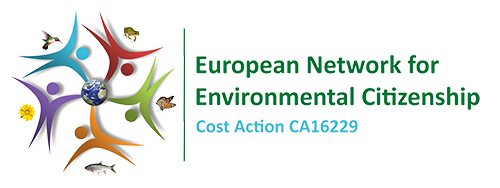Search Results Resources
You have searched in Resources with the following criteria: << Go Back
The search returned 68 results.
Pedro Reis
- From
- 6
- To
- 25+
Let’s save the bees! An environmental activism initiative in elementary school.
English
Portugal
Science education research emphasizes the need to engage students in socio-scientific issues, empowering them to act in a substantiated manner. This study aims to understand the potential of a collective action initiative, focused on the decreasing honey production issue, and on the students’ empowerment for action. A qualitative research methodology was used with an interpretative stance. The participants were 26 3rd grade students and their teacher. Data was collected from the students written documents, and through an interview with the teacher. Results show that students’ engagement in collective action focused on the decreasing honey production issue, required them to mobilize their scientific knowledge to support their actions, as well as the development of several other competences. Students also became aware of the importance, for every citizen, to substantiate their knowledge in order to act, that acting is crucial to overcome issues that may persist and impact future generations, and that only by engaging in action can change take place. Another highlight was the students’ strong engagement in collective action, allowing them to raise awareness this issue in their local community.
Erkan Cermik
- From
- 12
- To
- 16
Developing Environmental Citizenship Knowledge Test and Determining the Knowledge Levels of Secondary School Students
Turkish
Turkey
In this study, a theoretical, valid and reliable knowledge test was developed to measure the knowledge dimension of environmental citizenship in secondary school students. In addition, environmental knowledge levels of secondary school students were examined. The data were collected from a total of 255 secondary school students studying in the seventh and eighth grade1 . Within the framework of environmental citizenship, a multiple-choice knowledge test consisting of 45 items was prepared in accordance with Bloom's taxonomy considering the secondary school environmental curriculum standards. As a result of the item and test statistics using the Classical Test Theory, items with item difficulty and item discrimination indexes at the desired level were selected. Content validity was taken into consideration in the selection of the item. As a result of the analysis, Environmental Citizenship Knowledge Test consisting of 25 items with average difficulty value of 0.54 and average discrimination value of 0.57 was obtained. The internal reliability coefficient of the test (KR20) was determined to be 0.85. Findings showed that secondary school students' level of knowledge about the dissolution time of different substances in nature is low. The sub-dimension, where the students have the highest level of knowledge, is the Mindful Consumption-Conscious Consumer sub-dimension. However, it has been observed that knowledge levels on global warming and greenhouse effect are lower than other subdimensions. The fact that the lowest level of knowledge is the behavior towards environmental protection emphasizes the importance of environmental citizenship education. The test developed in the study is a valid and reliable scale to measure the knowledge dimension of environmental citizenship levels of secondary school students.
Andreas Ch. Hadjichambis
- From
- 13
- To
- 25+
Environmental crime on the coast
Greek
Cyprus
- Knowledge
- Skills
- Competencies
- Values
- Attitudes
- Behaviours
- Social Aspects of Environmental Citizenship
- Environmental Citizenship General
- Individual actions
- Actions in Private sphere
- Actions in Public sphere
- Actions in Local scale
- Actions in National scale
- Preventing new environmental problems
- Solving environmental problems
- Addressing structural causes of environmental problems
- Achieving critical & active engagement and civic participation
- Practising environmental rights & duties
- Developing healthy relationship with nature
- Achieving sustainability
- Inquiry
- Sustain Environmental and Social Change
This one-day program includes the participation of students in a series of activities with theoretical and practical direction and is based on the pedagogical methodology of problem solving. It is organized in such way as to support the understanding of environmental concepts and issues by anchoring students in an exciting learning adventure for them. Mission: Students arrive on the Coast and are informed that as members of the “Department of Environmental Crimes Investigation” they are called upon to solve a crime involving the area. Solving the mystery requires students to go through different document collection stations, to evaluate testimonies by participating in various experiential activities. Creation of sand dunes: Students drawing information from scientific articles, tables of abiotic factors and study of specific life factors, know the ecosystem of dunes and study how to create and develop them through experimental and playful way. Food webs: Students, using the evidence they collect about the food relationships of Coastal organisms, discover the Food webs of the Coast. Thus, they delve deeper into the concepts of food relationships, while at the same time recognizing organisms in the area and their relationships with each other. The effect of garbage: Students study and discover various presumptions that are related to the time of decomposition of different waste and their effect on the Coastal ecosystem. Through the data they collect and activities related to their rate of deconstruction, students wake up environmentally and realize the effects that anthropogenic waste can have on natural ecosystems. The coast and the humans: Students identify and study various presumptions that are directly related to the presence of human on the Coast and the consequences of anthropogenic activities in the ecosystem. They explore and outline human’s relationship with the shores. Solving the Problem: The data collected and answered specific questions that help the students in solving the mystery unfolding on the Coast are processed. They understand the importance of sustainable coastal management and protection and develop environmentally friendly attitudes and values. Action: Students returning to their school are asked to continue their action at the individual and collective level (class, school, community) to protect the coasts.
